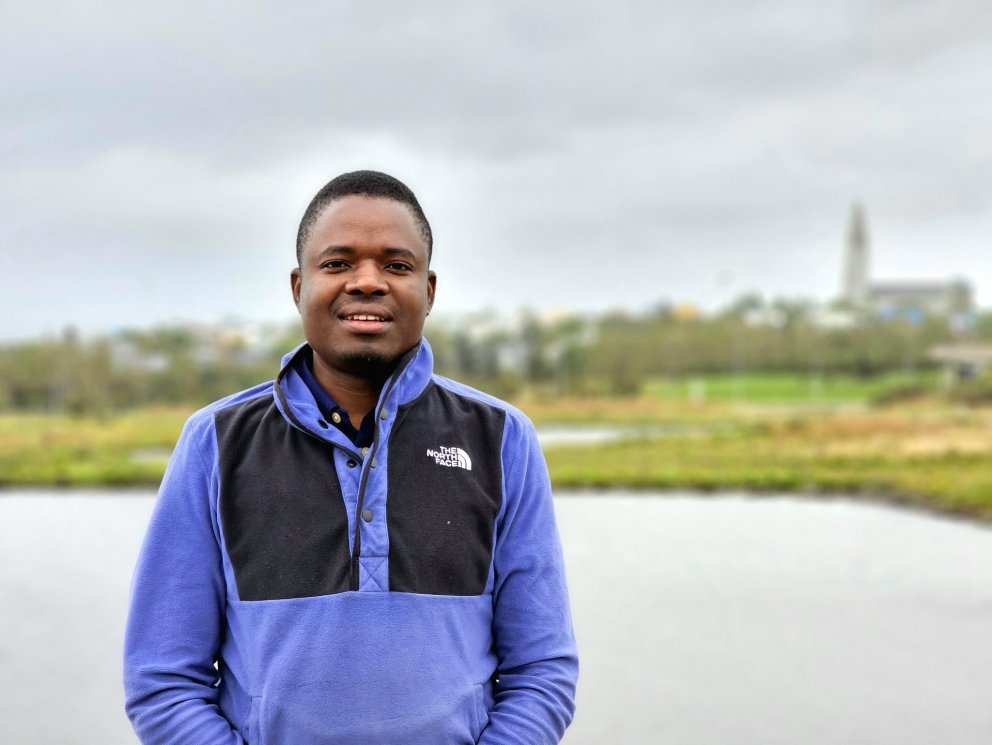PhD defence by Makoye Mabula Didas

On Tuesday the 8th of October, from 13:00-15:00, Makoye Mabula Didas will defend his PhD thesis in Geophysics in the Aula hall in the Main Building of University of Iceland.
The thesis is titled:
Regional thermal anomalies in Tanzania and improved geothermal conceptual models of the Ngozi and Rungwe prospects in SW Tanzania based on results from resistivity and potential field studies
Supervisor:
Gylfi Páll Hersir, Geophysicist, Independent Consultant
Dr. Halldór Geirsson, Associate Professor, University of Iceland
Dr. Egidio Armadillo, Professor, Universita’ di Genova, Italy
William Cumming, Geophysicist, Cumming Geoscience, Santa Rosa, USA
Dr. Ásdís Benediktsdóttir, Geophysicist, Reykjavík Energy (Orkuveita Reykjavíkur)
Dr. Daniele Rizzello, Geophysicist, Tellus-Explora S.A.S., Italy
Examiners:
Dr. Adam Schultz, Professor in Geophysics, Oregon State University, USA
Dr. Juanjo Ledo, Professor in Geophysics at the Department of Geodynamics and Geophysics, University of Barcelona, Spain
Chair:
Dr. Guðfinna Th Aðalgeirsdóttir, Professor, Faculty of Earth Sciences
Everyone is welcome to attend
Abstract
The main goal of the thesis is to evaluate the geothermal potential of Tanzania, in East Africa, by integrating magnetotelluric, magnetic, and gravimetric data and models with existing petrophysical, seismological, volcanological, geochemical and structural information. In this study, heat flux in Tanzania was determined from the radially averaged power spectra of the total magnetic field, interpreted as a proxy for the Curie Point Depth (CPD). The CPD was correlated to independent Moho depth estimates from seismic receiver functions and gravity data. The results show high heat flux anomalies (>100 mW/m2) situated along the East African Rift System (EARS). Generally, these high heat flow anomalies align with known surface geothermal manifestations and shallow Moho depth (approx. 30 - 35 km) compared to the average Moho depth of 40 km for most of Tanzania. According to the thesis findings, the most compelling areas for geothermal exploration in Tanzania are the EARS triple junction in the Rungwe Volcanic Province (RVP), the north Tanzania divergent zone in the eastern branch of the EARS, and the areas of the Proterozoic collision boundaries reactivated by the EARS. At a more detailed level, the thesis focuses on the investigation of the prospective geothermal resources in the RVP. High-resolution aeromagnetic data combined with known faults, seismic epicentres, and known surface geothermal manifestations, including thermal springs, hot ground areas, and 3D MT resistivity anomalies are employed to identify concealed structures which likely enhance permeability of geothermal systems and demarcate boundaries of geothermal systems within the RVP. A 3D resistivity model based on newly acquired and existing magnetotelluric data was used to update the geothermal conceptual model of the Ngozi system and to define a new high-temperature geothermal prospect beneath Rungwe volcano in the RVP. The 3D MT resistivity inversion results in Ngozi and Rungwe suggest magmatically heated geothermal systems with two reservoirs: a small one below Ngozi caldera and a larger one beneath Rungwe volcano. A deep conductor at ~6 km depth between Ngozi and Rungwe is interpreted as a magma chamber feeding heat to the geothermal systems. The identified Rungwe geothermal system in addition to the previously interpreted Ngozi system has significantly expanded opportunities for discovering geothermal resources in the planned drilling campaign. Structural investigations in the RVP utilizing magnetic data revealed that the potential areas for geothermal resources in the RVP are located at the intersections between the NW-SE trending intra-rift faults with NE-SW, N-S, and E-W trending faults. These zones of likely enhanced permeability are bound by low permeable Precambrian rocks to the west and east. An updated structural map was developed based on aeromagnetic data interpretation constrained by 2D-forward modelling of magnetic anomalies, integrated with previously reported faults, seismic epicentres, 3D magnetotelluric resistivity models, and surface geothermal features. The thesis work has significant implications for geothermal resource targeting and development in Tanzania and provides several examples of how to improve the search for geothermal resources worldwide.

